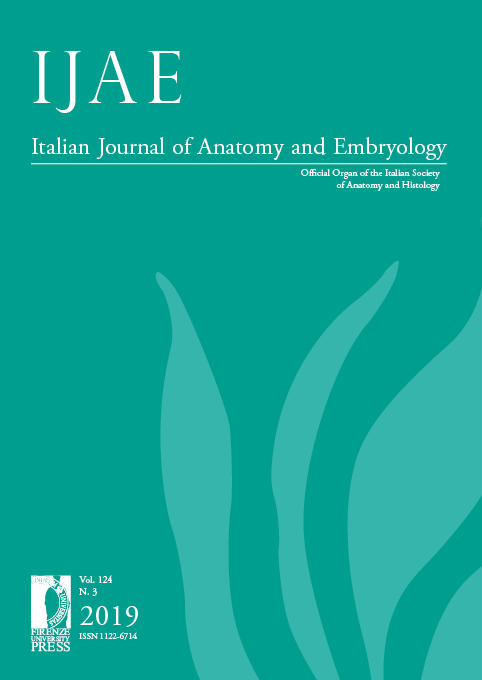Published 2020-05-20
Keywords
- Nervus medianus,
- nervus ulnaris,
- Martin-Gruber anastomosis
How to Cite
Abstract
The Martin-Gruber anastomosis (MGA) is the anastomosis in which the anastomotic branch originates proximally from the median nerve (MN) and unites distally with the ulnar nerve (UN). This is the most common form of “anomalous” innervation that have been reported in the upper part of the forearm. This study has a purpose to report the incidence, type, topography of MGA found and access the lenght and diameter of these anastomosis. For this study, 60 anterior forearms (30 right and 30 left) from adult adavers were dissected. The presence of MGA was verified in 18,33% forearms. Single MGA anastomosis was found in 90,9%, corresponding to type A in 10%, type B in 10% and type C in 80%, while double MGA was found in 9,1%, both been duplification of type C. Anastomoses were found mainly on the right side in anatomical examination (seven against four). No statistically significant difference was found between men and women regarding the frequency of the MGA. In pattern I, the course of of MGA was transveral in 90% of cases, and arched in 10%, while in pattern II, the superior connection was tranversal and the inferior was oblique. The MGA passed in front of the ulnar artery in 3 cases and behind in 9 cases. The average length of the anastomosis was 6.2 cm, while the average diameter was 1.14 mm. The anastomoses between MN and UN are clinically relevant so therefore the knowledge of the existance of the MGA in the forearm, types of presentation and topography is extremely important for the correct diagnosis of neuropathies as well as essential to diferrentiate a complete damage from a partial injuries of peripheral nerves.


